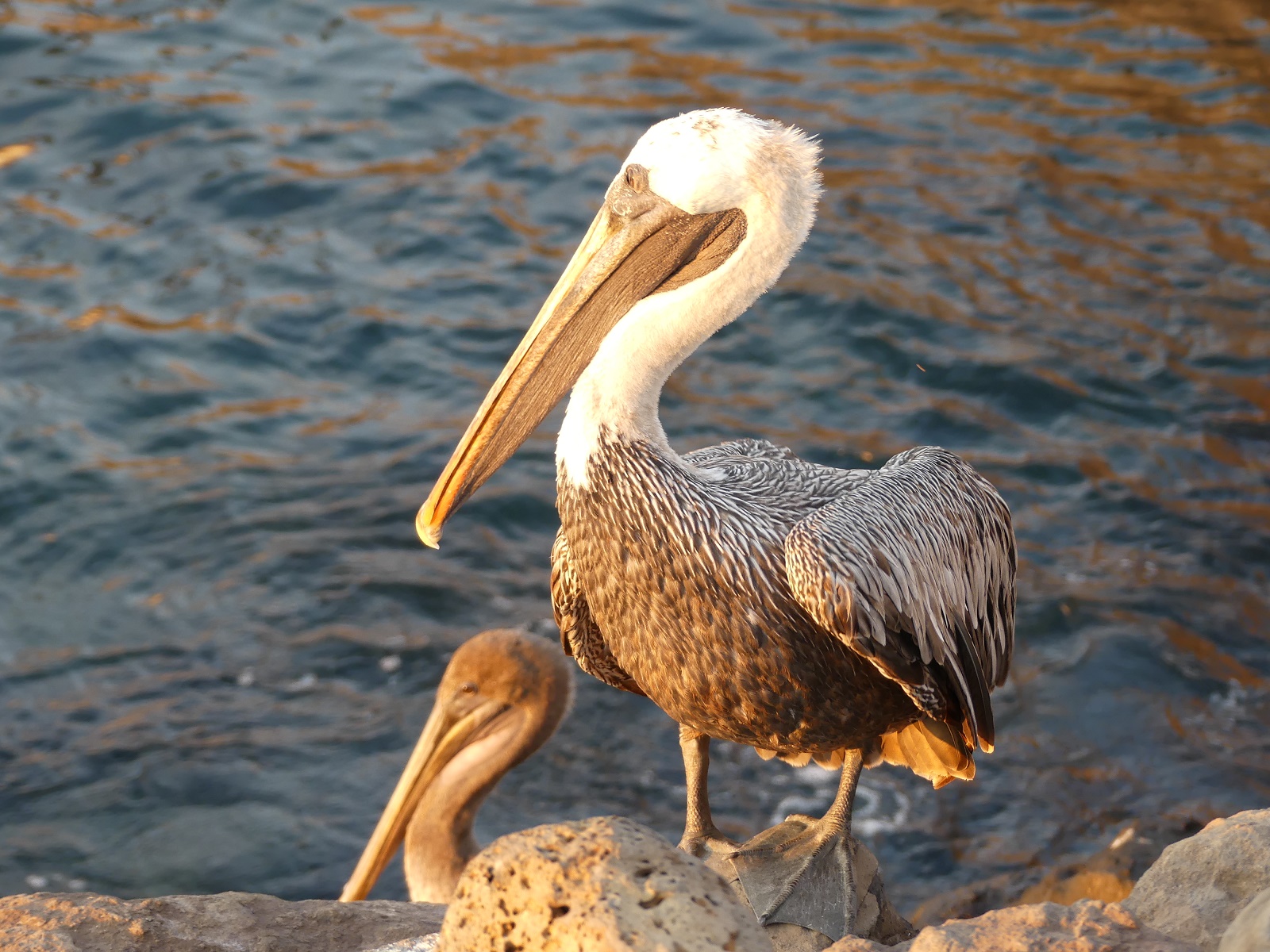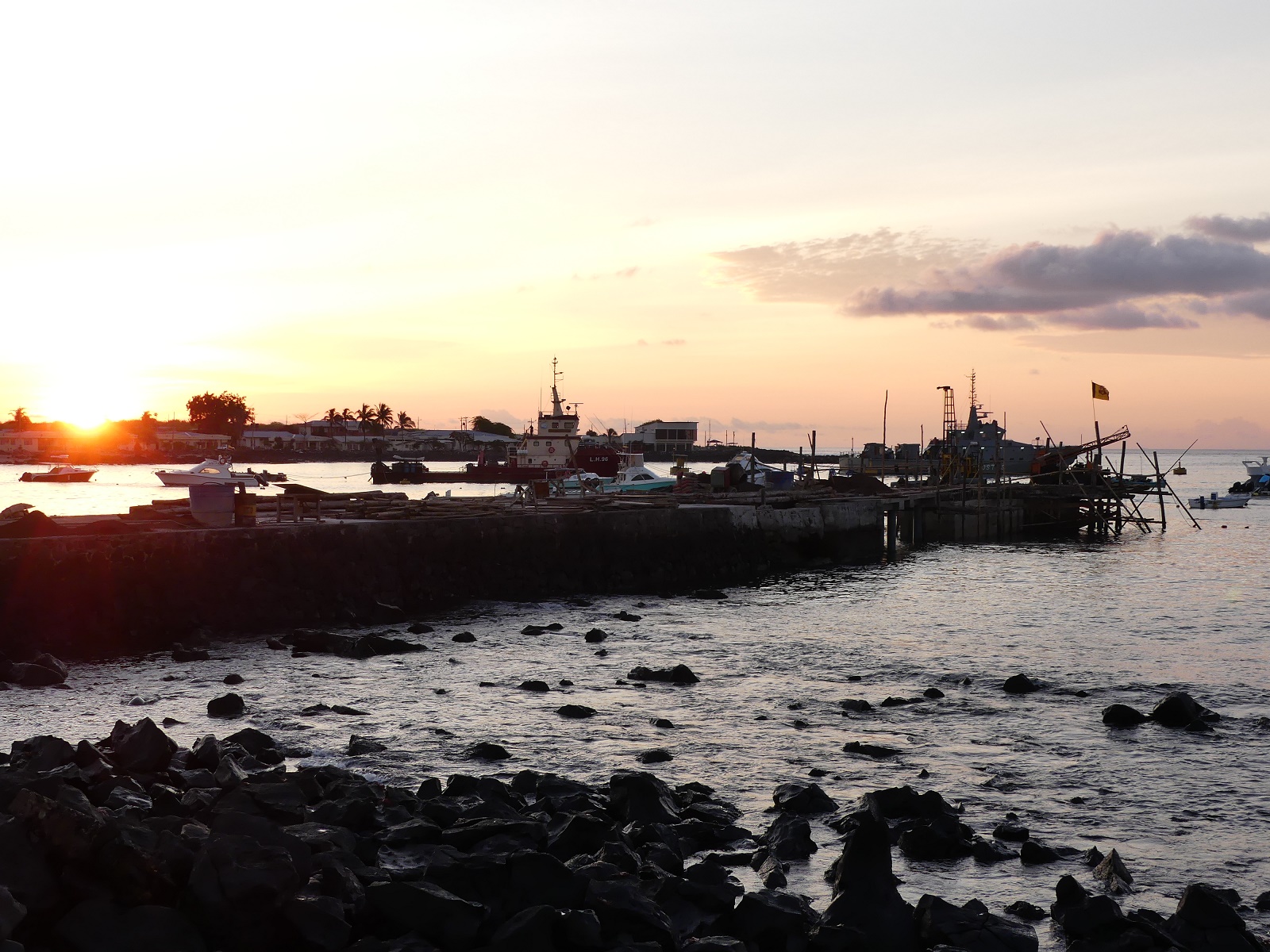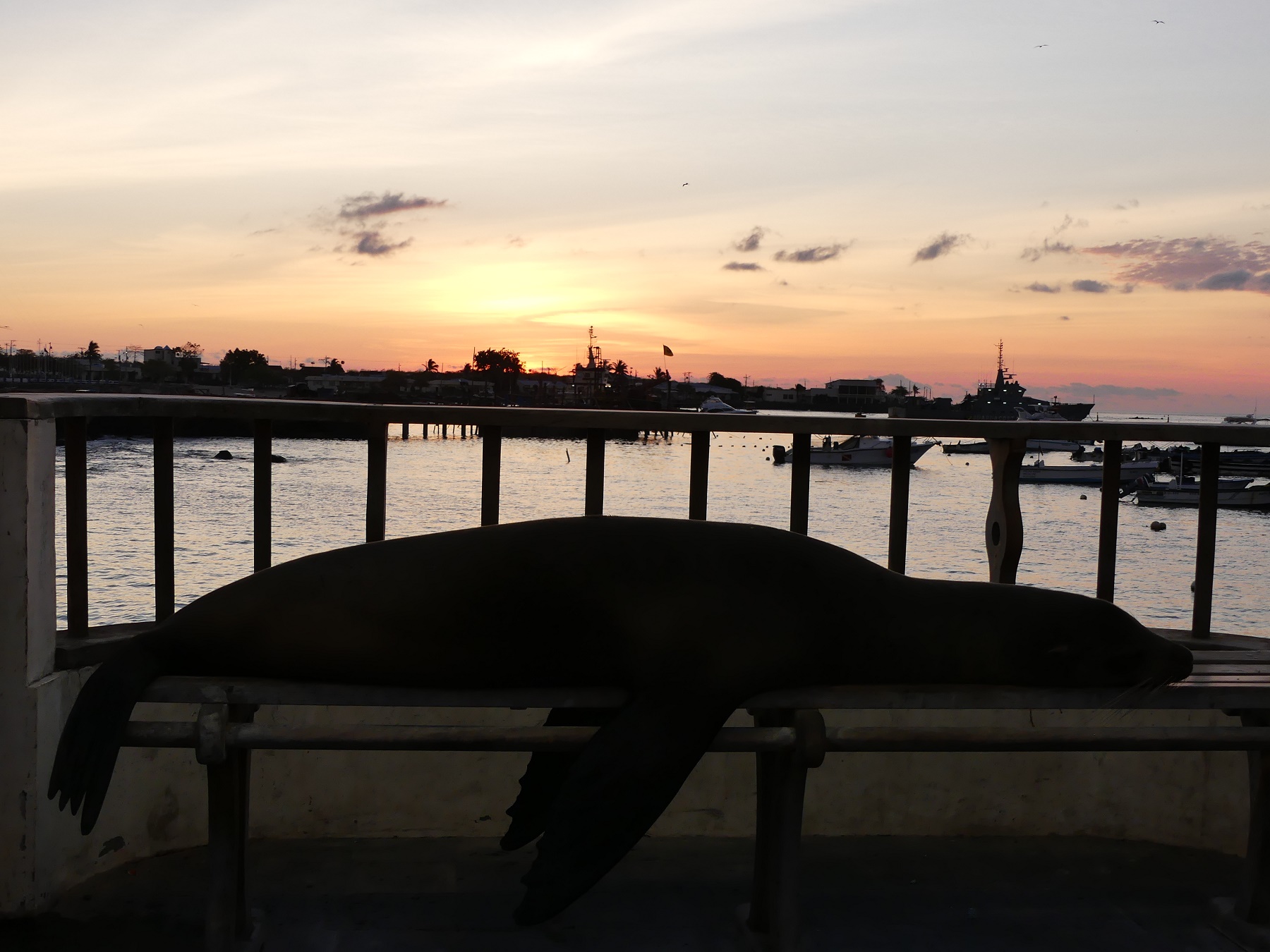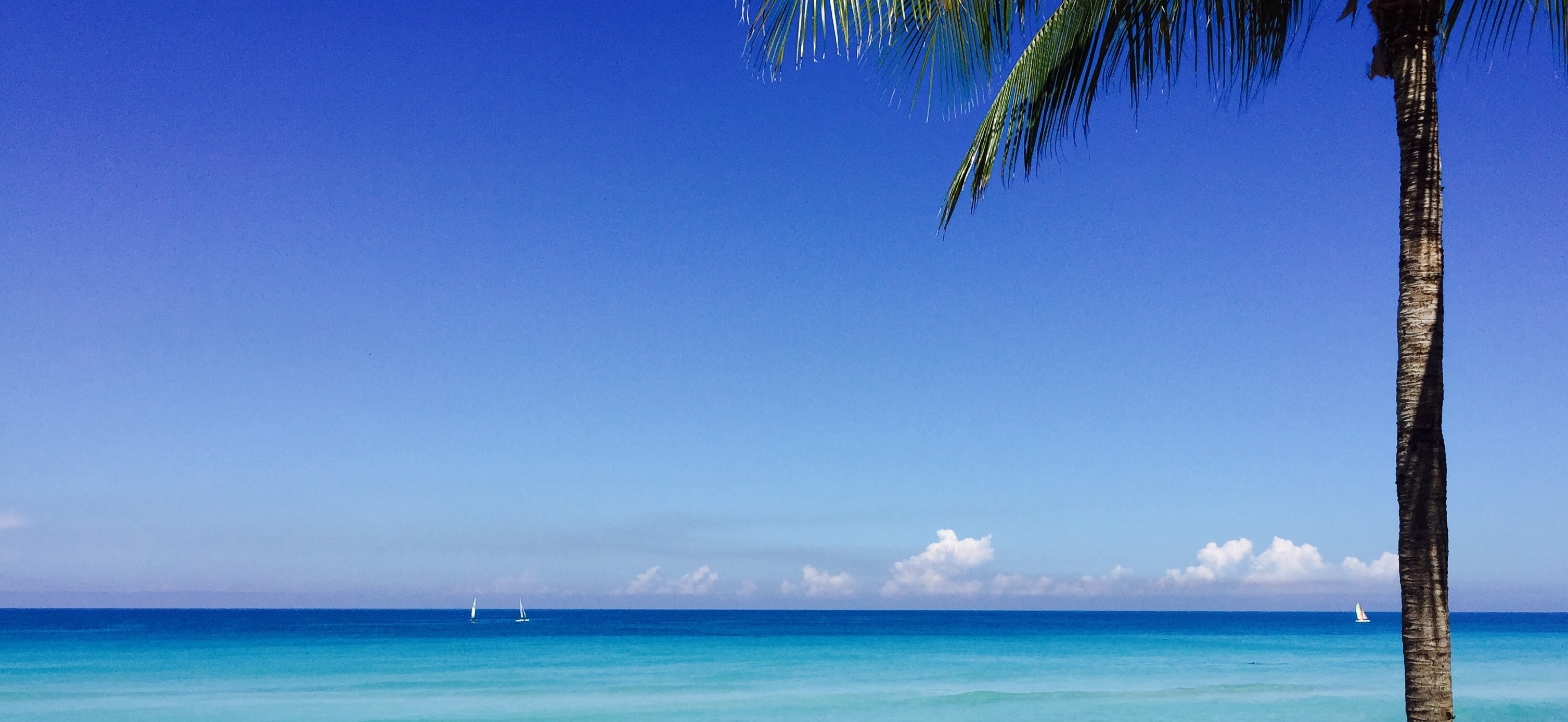Lobos Island
Overnight we navigated to Lobos Island, close to San Cristobal – the capital of Galapagos with around 8,000 people living here.
While there is no distinct mating season for many of the animals on the islands (they tend to mate year-round due to the constant weather patters) many of the Great frigate birds were mating so we were hoping to spot a male trying to attract a female. Once they’ve built their nest, the Great frigate bird sits on it and inflates its gula pouch – a large red pouch just below their beaks – so you cannot miss them.
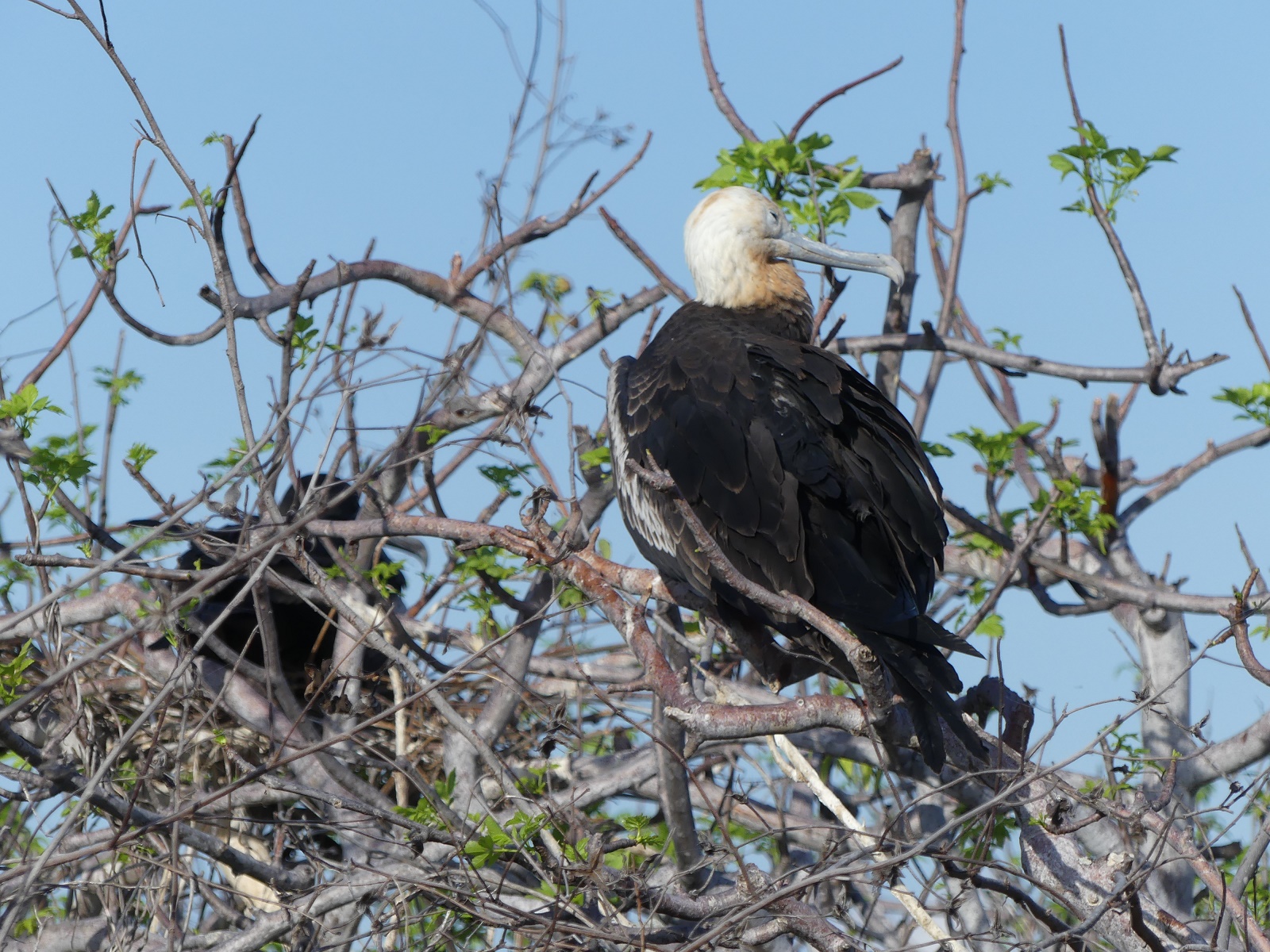
Female Great frigate birds waiting for a male
We saw many Great frigate birds during our walk, unfortunately not many males with inflated pouches. However, the beautiful blue-footed boobies more than made up for it! They were so cute with their bright blue feet. We also saw a male trying to impress a female with his dancing – lifting one foot then the other and sky-pointing its wings. The female did look impressed, as she danced with him and he even got a kiss on the beak!

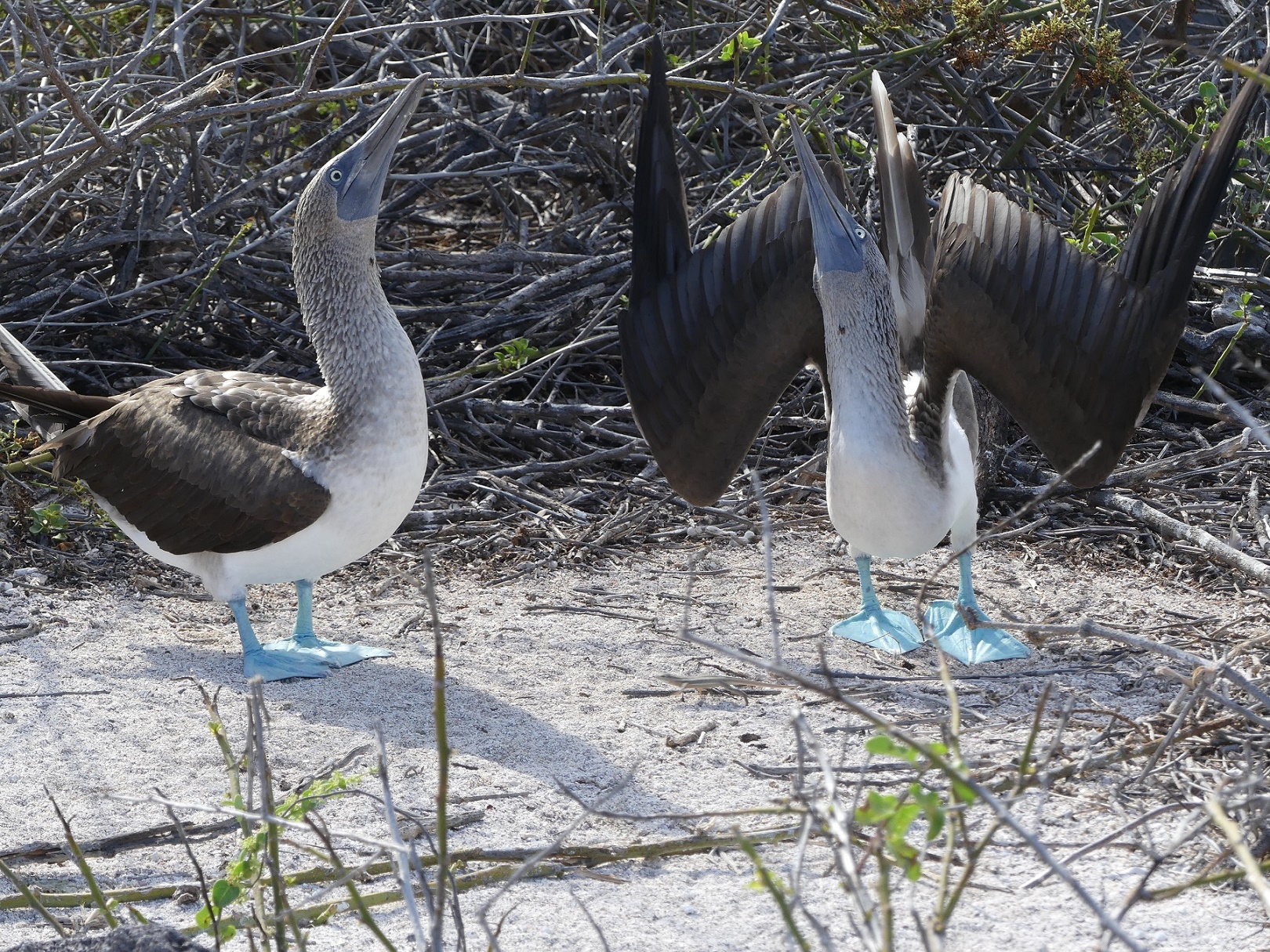
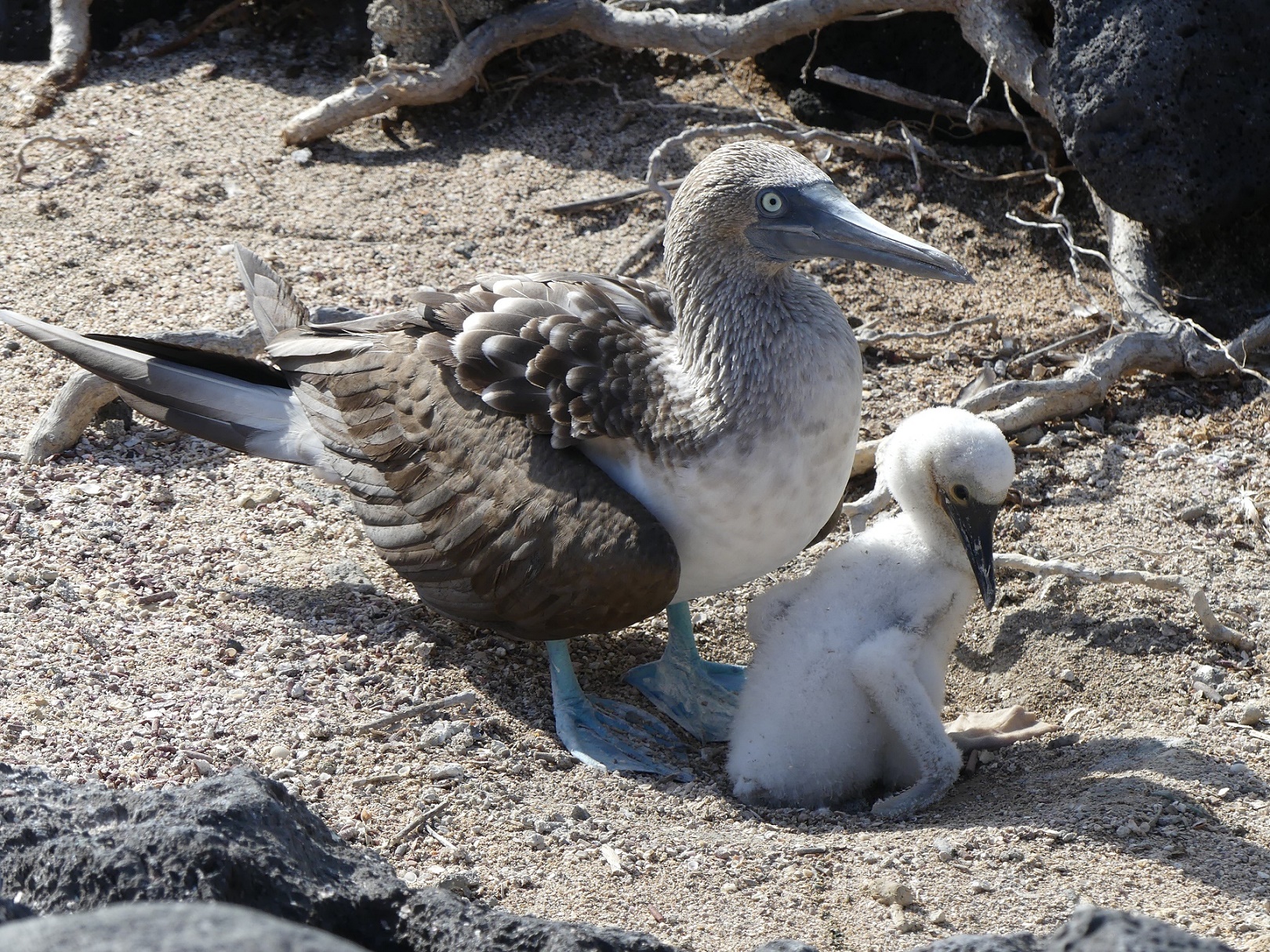
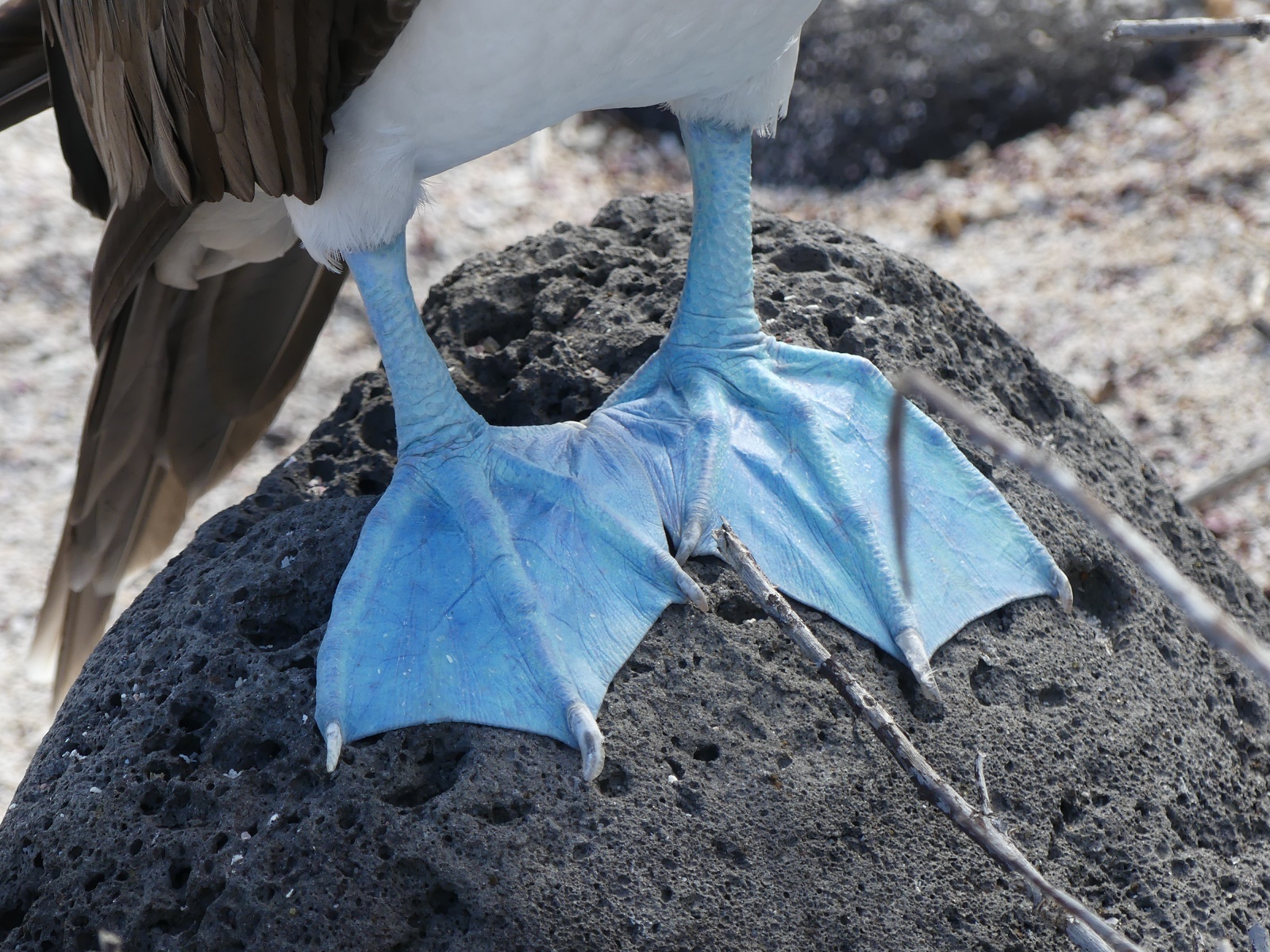
We also saw many marine iguanas climbing the rocks. They are much darker than their land cousins and have laterally flattened tails and powerful claws that help them swim through the surf and maintain its grip on the rocks whilst feeding.
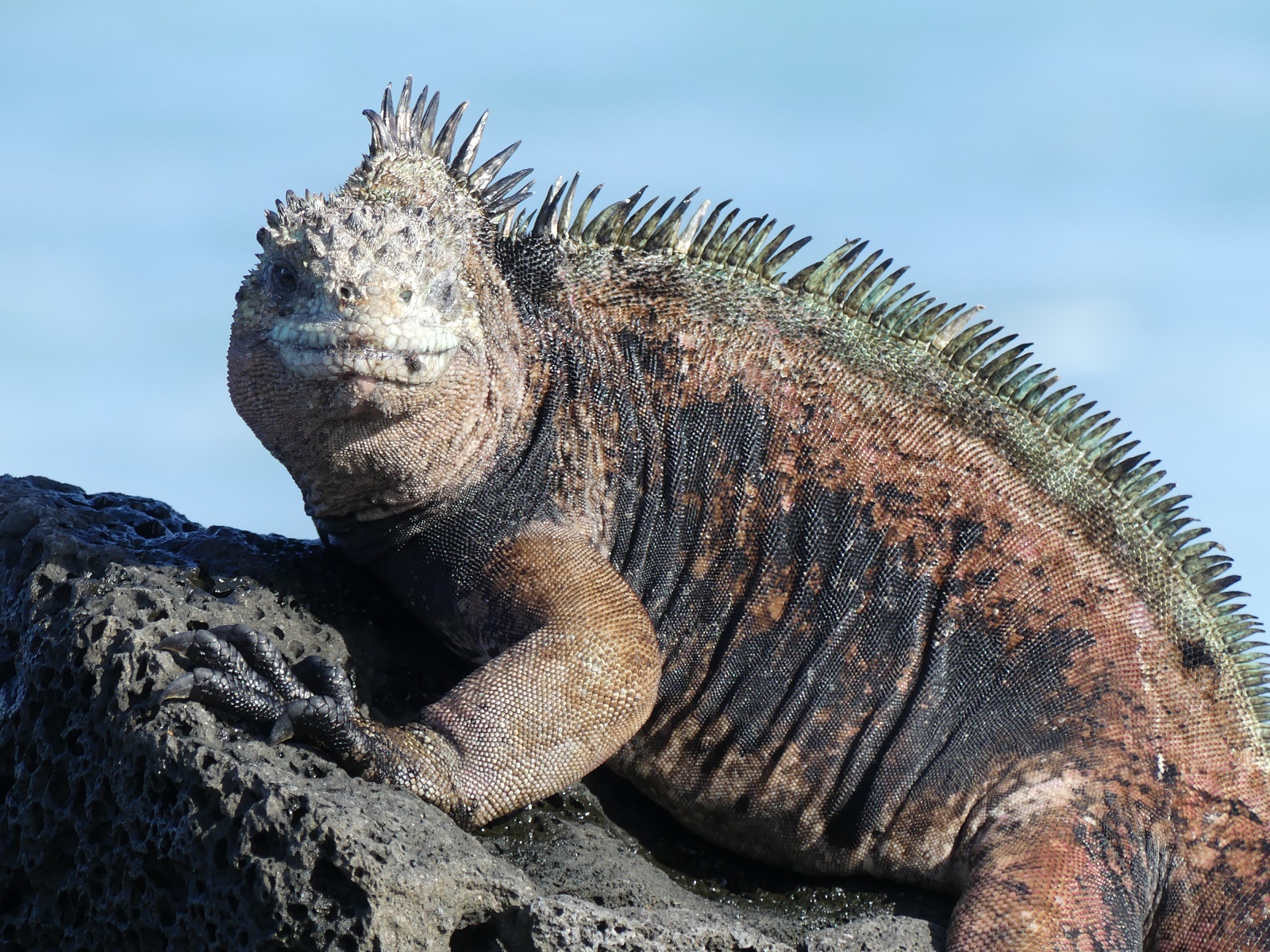
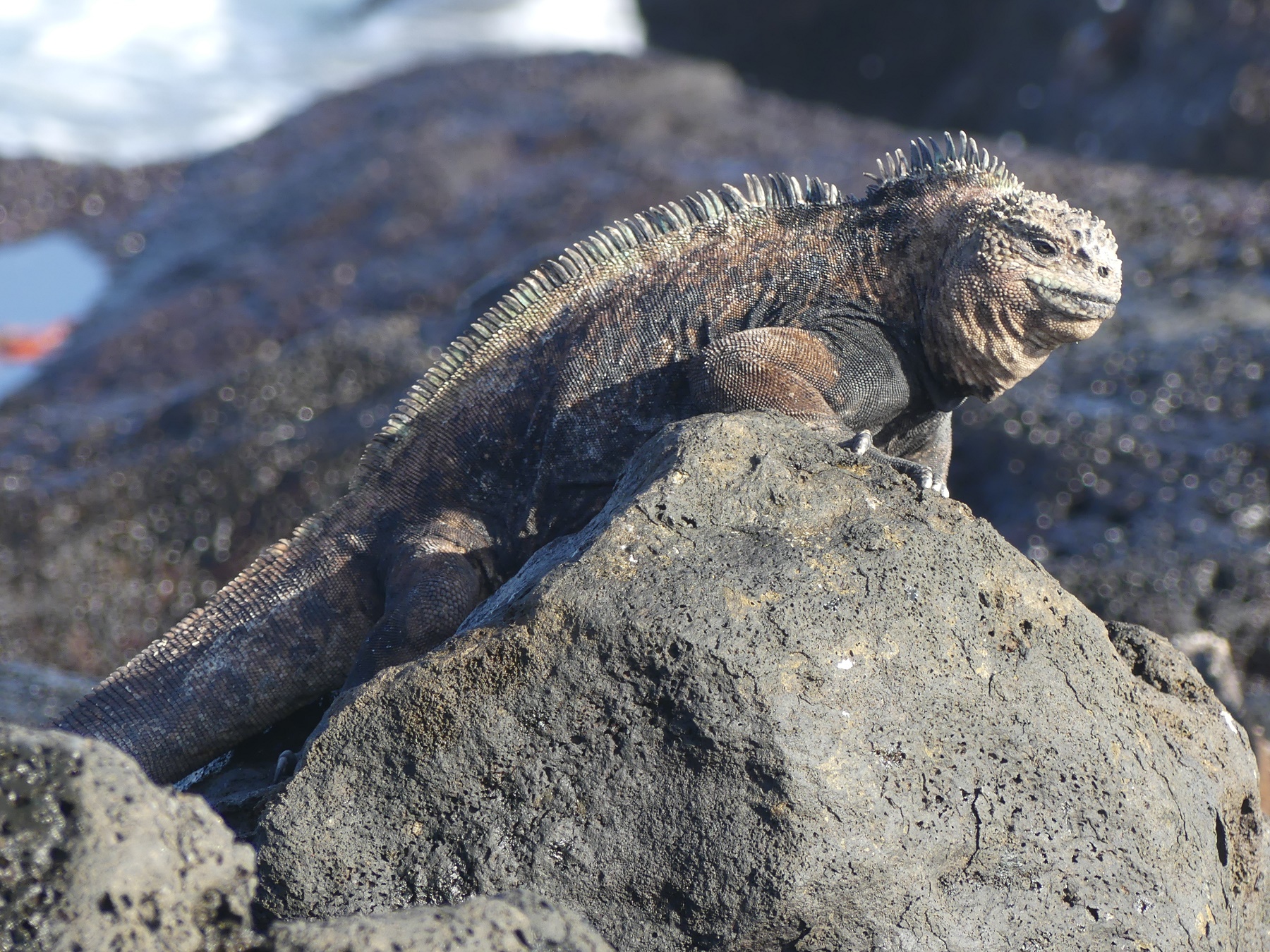
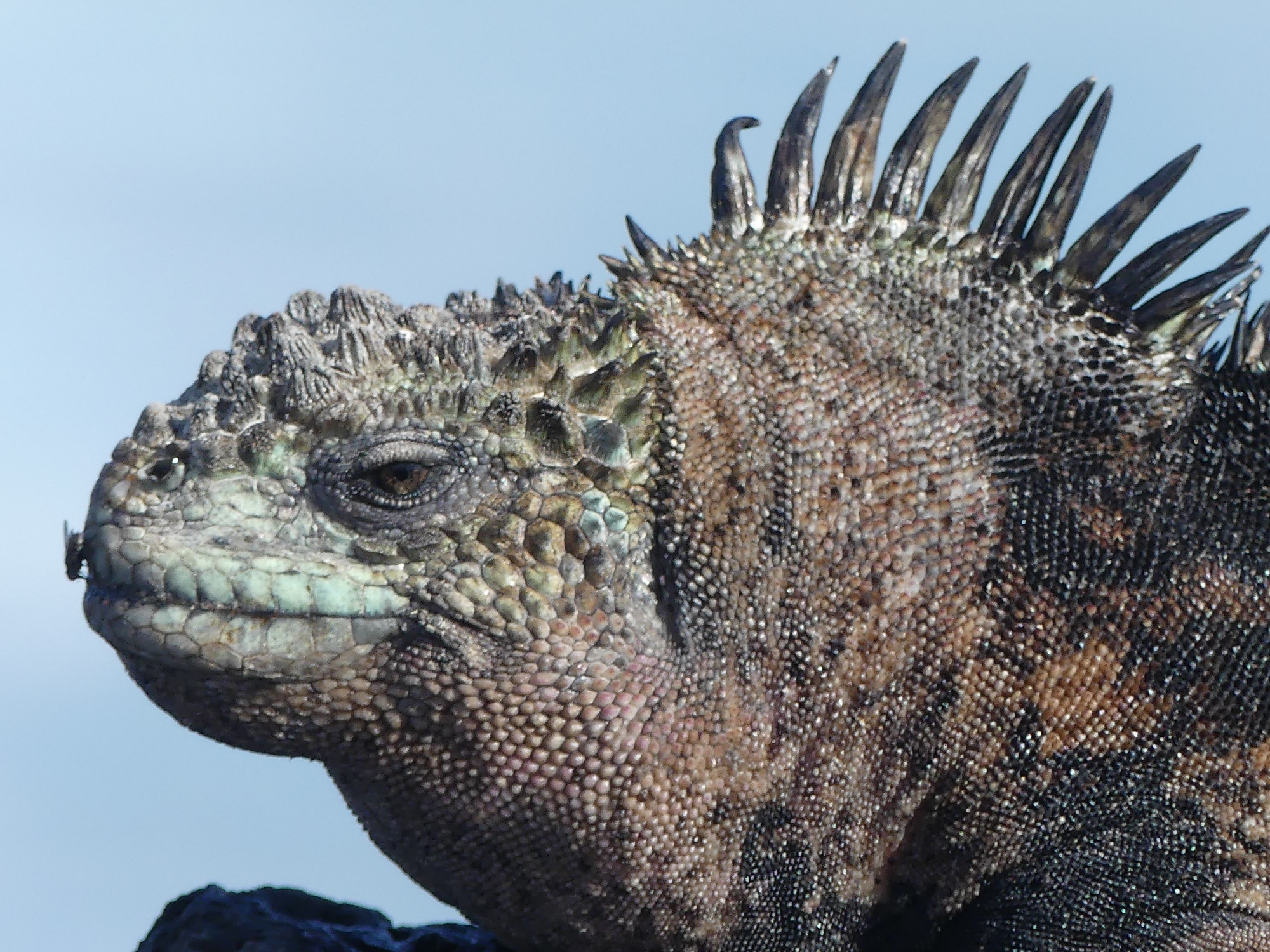
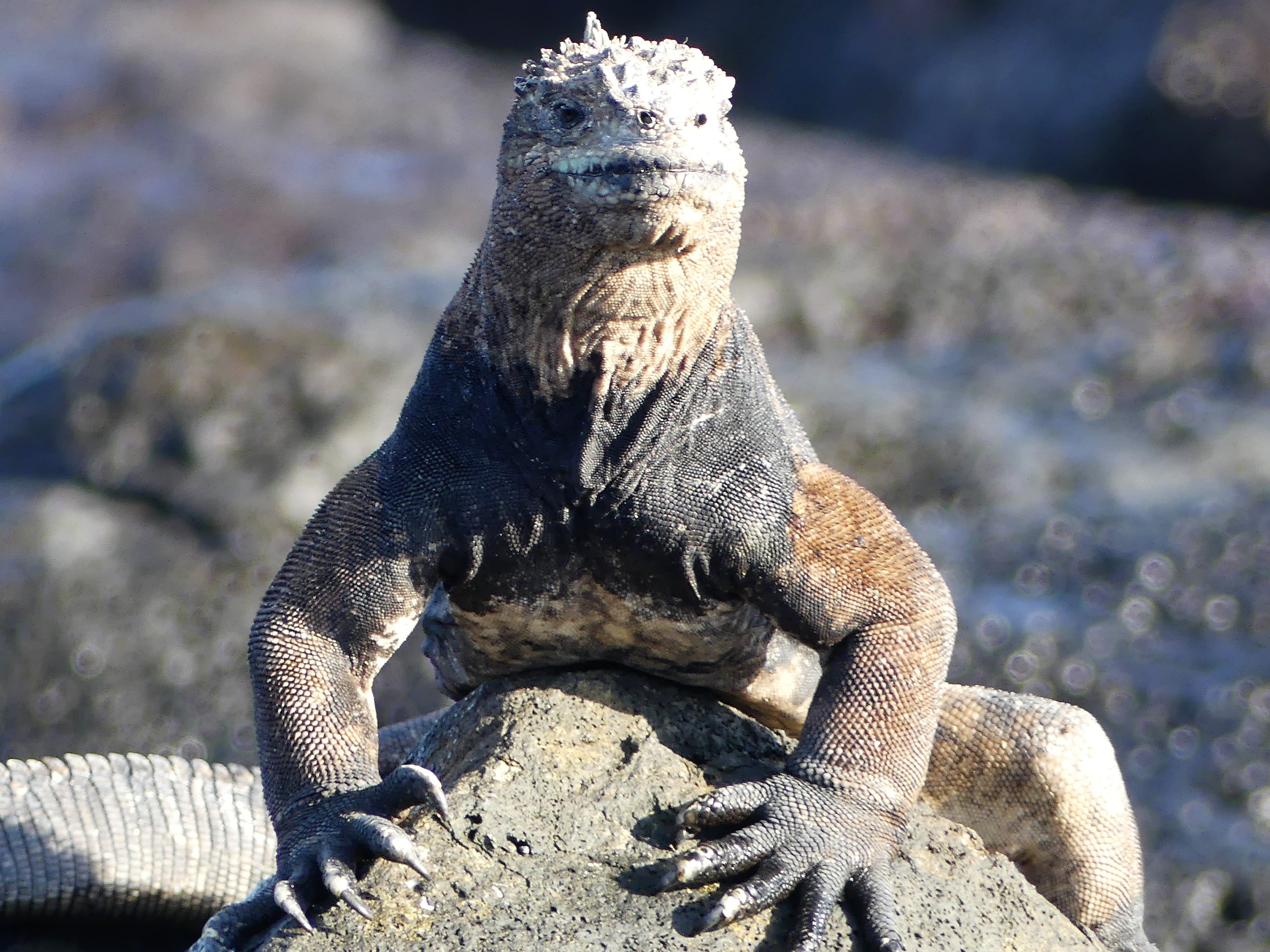
By the time we got back, Derek was already boiling and it was only 9am! The snorkelling was therefore very welcome and a refreshing treat. We saw a few reef fish before Derek called me over. He was in the middle of a sea lion playground with at least five pups and three or four females swimming around. They got extremely close to us, trying to figure out who or what we were. Even though we have seen and gotten close to so many sea lions by now, it is still such a joy to be in the middle them and watch them play and get close to you.
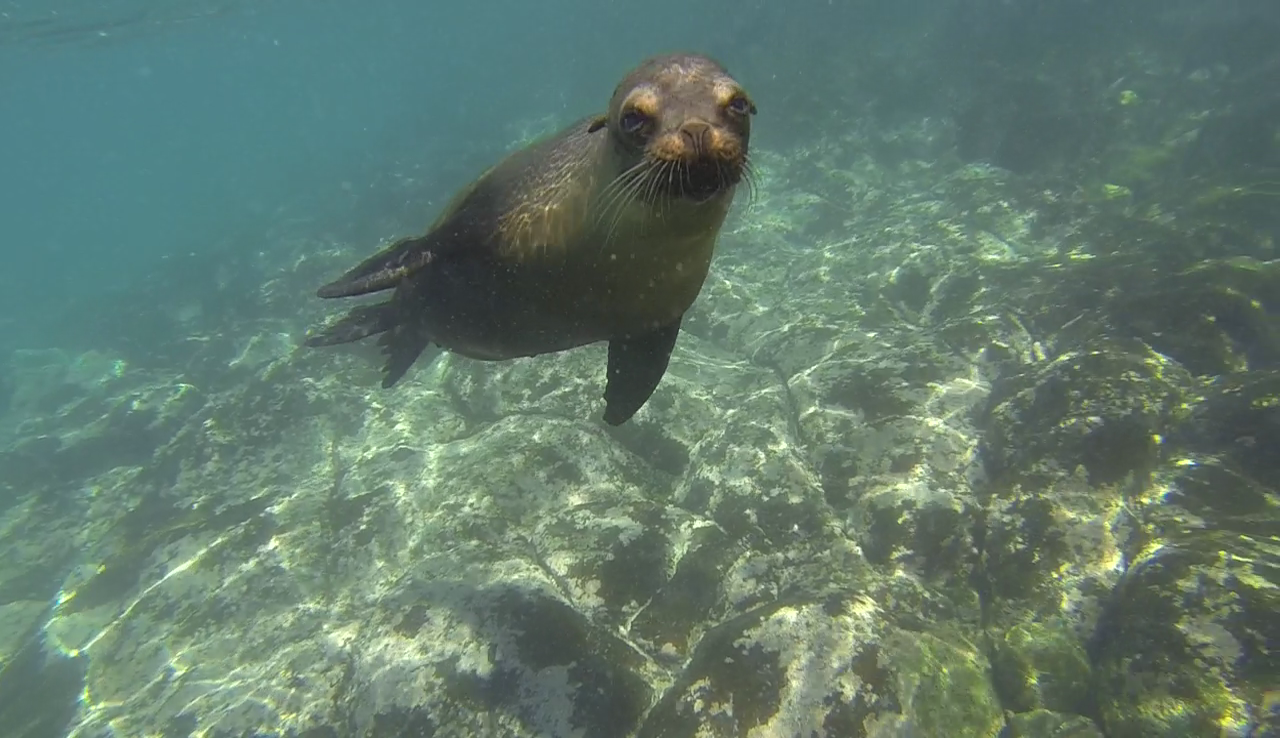
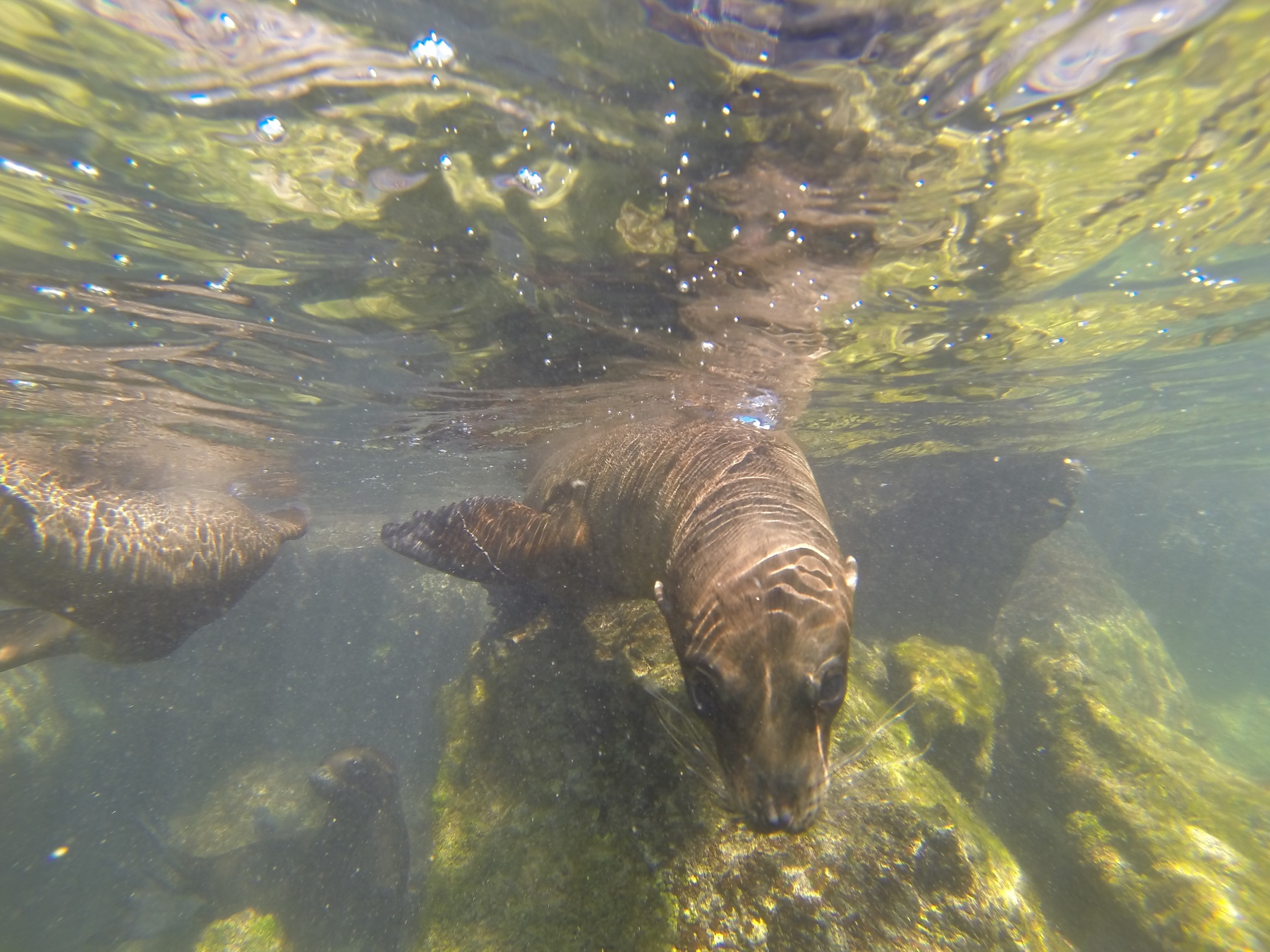
Derek was lucky enough to spot a few rays on the bottom, hiding under the sand. We also saw loads of fish and a school of juvenile parrot fish.
During the afternoon we visited the tortoise refuge centre on San Cristobal island. They are still trying to get the tortoise numbers up to a stable level, following years and years of tortoise hunting by the whalers and early settlers on the island.

The tortoises on this island have a very distinct “saddle back”, which also got them their name.
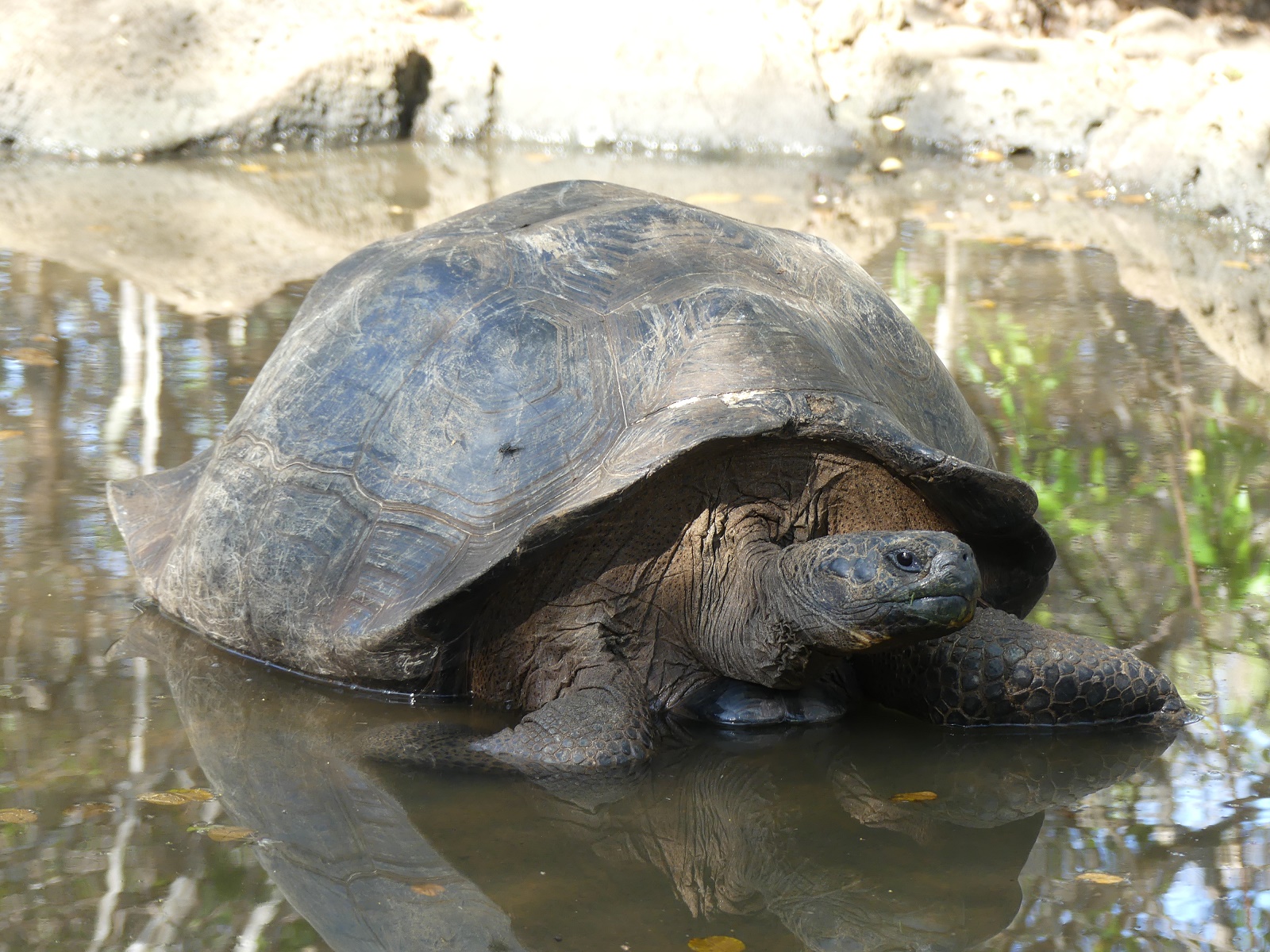
We saw around 20 small tortoises in their breeding cages where they will stay until they reach three years of age, before being released in a protected area for another two years. Only when they are five years old will they be released into the wild.
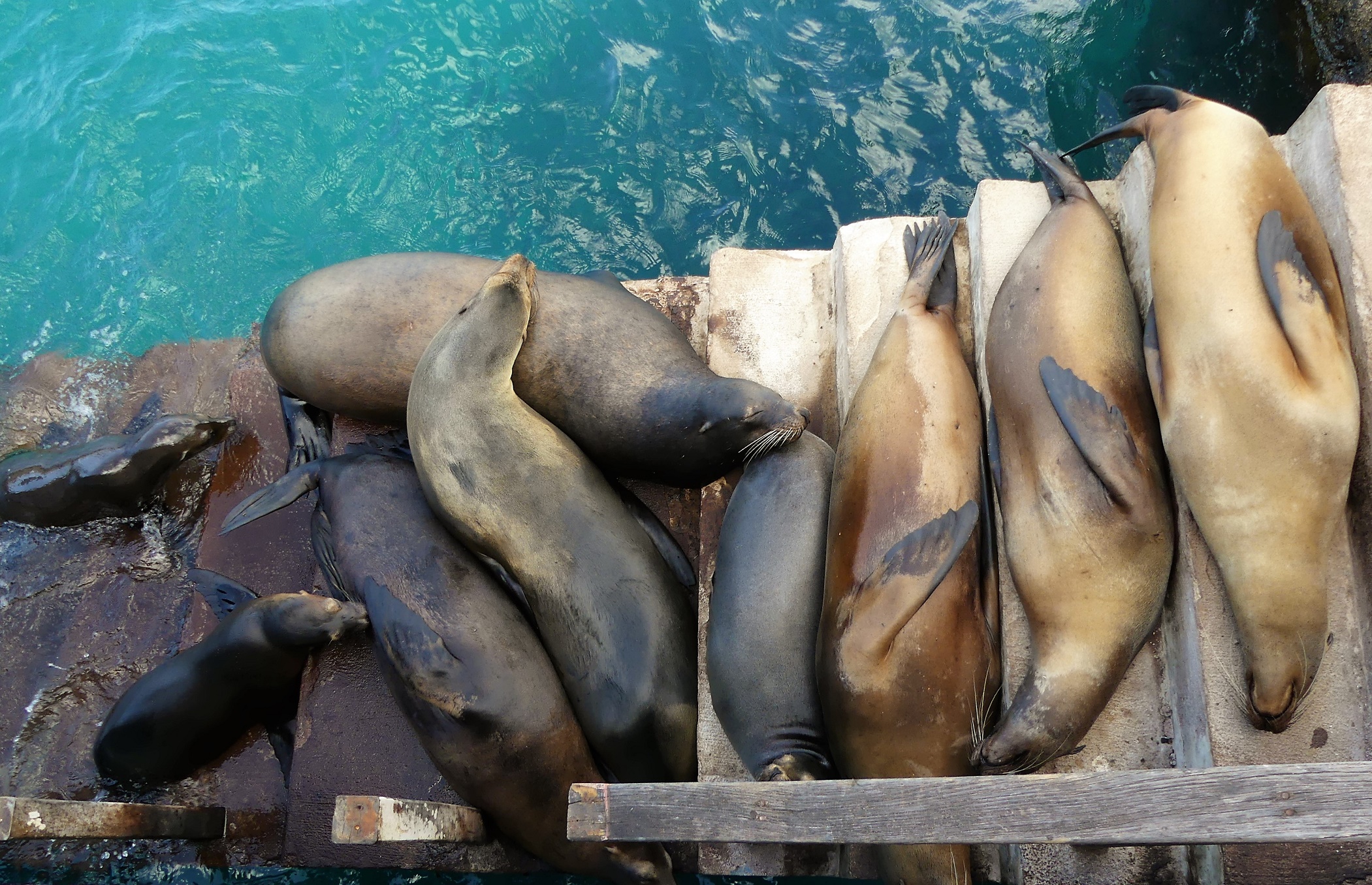
Please use the other stairs…
